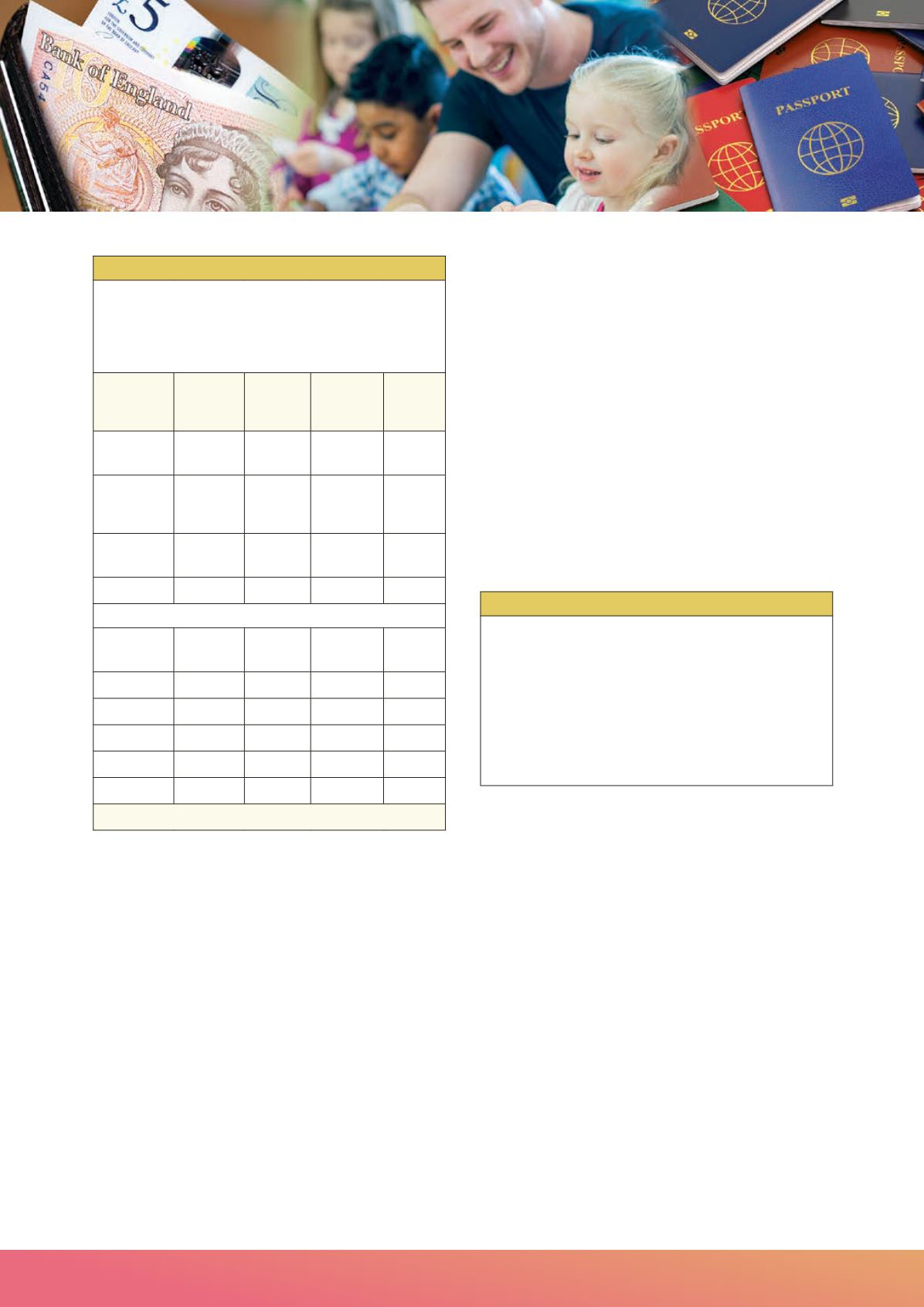

14
Case Study
Sandra is a single person with a gross 2018/19 income of
£56,000 (made up of £26,000 earnings, £5,000 of interest
and UK dividends of £25,000) and capital gains of £15,000
(assuming no other reliefs, etc). She would have a tax liability
of £8,528.
Earnings
£
Interest
£
UK
Dividends
£
Gains
£
Income and
gains
26,000 5,000 25,000 15,000
Deduct:
Personal
allowance
– 11,850
Deduct: CGT
exemption
–11,700
Taxable
14,150 5,000 25,000 3,300
Tax at:
0% the PSA
and DTA
0
500
2,000
20% on
14,150 4,500
7.5% on
13,350
32.5% on
9,650
20% on
3,300
Totals
£2,830.00 £900.00 £4,137.50 £660.00
Total tax liability £8,527.50
Transferring assets
Planning can be hindered by the potential for tax charges to
arise when assets are moved between members of the family.
Most gifts are potentially taxable as if they were disposals
at market value, with a resulting exposure to CGT and IHT.
However, special rules govern the transfer of assets between
spouses. In many cases for both CGT and IHT there is no tax
charge, but there are some exceptions – please contact us for
further advice. In addition, gifts must be outright to be effective
for tax, and must not comprise a right only to income. Careful
timing and advance discussion with us are essential.
The ‘hidden’ 45% and 60% tax rates
The top rate of income tax, for those with taxable income in
excess of £150,000, is 45% (38.1% for dividends). The PA is
scaled back if ‘adjusted net income’ exceeds £100,000, being
reduced by £1 for every £2 of income in excess of that limit.
This means that an individual with total taxable income of
£123,700 or more will not be entitled to any PA. This gives
an effective tax rate on this slice of income of 60%. It may
be possible to reduce your taxable income and retain your
allowances, if approached with due consideration, eg. by
making pension contributions or Gift Aid donations. Contact us
now for advice on minimising the impact of the top tax rates.
High Income Child Benefit Charge
A charge arises on a taxpayer who has adjusted net income over
£50,000 in a tax year where either they or their partner are in
receipt of Child Benefit for the year. Where both partners have
adjusted net income in excess of £50,000 the charge applies to
the partner with the higher income.
The income tax charge applies at a rate of 1% of the full Child
Benefit award for each £100 of income between £50,000 and
£60,000. The charge on taxpayers with income above £60,000
will be equal to the amount of Child Benefit paid. Claimants may
elect not to receive Child Benefit if they or their partner do not
wish to pay the charge. Equalising income can help to reduce
the charge for some families.
Case Study
Mark and Elizabeth have two children and receive £1,789
Child Benefit for 2018/19. Elizabeth has little income. Mark
expects his adjusted net income to be £55,000. On this basis
the tax charge will be £895. This is calculated as £1,789 x 50%
(£55,000 - £50,000 = £5,000/£100 x 1%).
If Mark can reduce his income by a further £5,000 no
charge would arise. This could be achieved by transferring
investments to Elizabeth or by making additional pension or
Gift Aid payments.
Cap on reliefs
There is a ‘cap’ on certain otherwise unlimited tax reliefs
(excluding charitable donations) of the greater of £50,000 and
25% of your income. This cap applies to relief for trading losses
and certain types of qualifying interest.
Giving your children a good start
Funding university and saving up a deposit for a first home
are increasingly expensive prospects, so the sooner you start
planning, the better. All children have their own PA, so income
up to £11,850 escapes tax this year, as long as it does not
originate from parental gifts. If income from parental gifts
exceeds £100 (gross), the parent is taxed on it unless the child
has reached 18, or married. Parental gifts could be invested
to produce tax-free income, or in a Cash or Stocks and Shares
Junior Individual Savings Account (JISA) to help build a fund to
help offset university expenses and minimise debts. The £100
limit does not apply to gifts into JISAs or National Savings
Children’s Bonds.


















